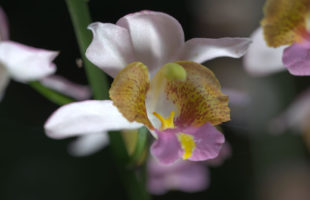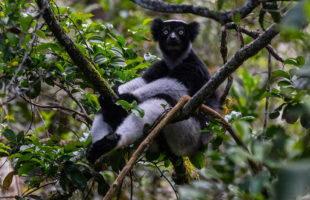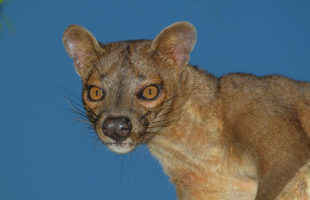Madagascar is home to many frogs that are found nowhere else in the world. One such unique inhabitant of the tropical island is Scaphiophryne marmorata, the Marbled Rain Frog. The males of the Marbled Rain Frog grow to 32 to 36 millimeters in size – that’s just a little more than two sugar cubes. You can easily recognize them by …
LesenDimby
Inselbergs Angavokely and Angavobe
Angavokely and Angavobe: The names Angavokely and Angavobe mean “few bats” and “many bats”. The names refer to the caves of the protected area where the harmless fluttering animals live. Location: The park of Angavokely and Angavobe is located only 36 km east of the capital Antananarivo. With a car and driver, it takes about one to two hours to …
LesenRanoro, the Daughter of the Water
Many centuries ago, in the times of the Vazimba, there existed the Zazavavindrano, the daughters of water. One of them was Ranoro. This is her story. One day, a young man from the Betsileo ran to the Mamba River in the central highlands of Madagascar. The man’s name was Andriambodilova. In the middle of the river, he spotted a beautiful …
LesenChili peanut dip
Sakay sy voanjo Sakay is the Malagasy name for Habanero-like small chili cultivated only in Madagascar. Normally it is processed in the dried state. The dips prepared with it are extremely hot, which is why we have also included a milder variant made by our team member Dimby from Madagascar in our recipes. In this recipe, the still green Sakay …
LesenThe lighthouse of Nosy Nato
At the southern tip of the paradise island, Nosy Nato on the east coast of Madagascar lies a small lighthouse, which the islanders call “Phare Blévec”. It was built in 1914 under the French colonial power and is one of the oldest lighthouses of Madagascar. There are only a handful of historical lighthouses in Madagascar. The one on Nosy Tanikely …
LesenZahamena national park
Zahamena: Zahamena means „red trees“, which hints at a tree species scientifically called Diatum unifoliatum. It occurs only in Zahamena and has a typically reddish-orange colored bark. Location: Zahamena national park is located in the northeastern highlands of Madagascar, in the region Alaotra-Mangoro. This area is famous for Madagascar’s largest lake, Alaotra, which is about 25 km away from the …
LesenV.O.I.M.M.A. reserve
V.O.I.M.M.A: The letter sequence is an abbreviation for Vondron’olona miaro mitia ala, in English „Local people love the forest“. Lage: Andasibe is located about 130 km away from the capital Antananarivo and is one of the major attractions for travelers in Madagascar due to its national park Andasibe-Mantadia. By car, you can reach the village in approximately four hours. V.O.I.M.M.A. …
LesenWhy the largest lemur in the world is called Babakoto
Once upon a time in a small village in Madagascar, a Bezanozano man (a tribe living in the east of the country) prepared a small basket. He asked his little son Koto to come with him and together they wandered deep into the jungle to find honey. After a few hours they found a bee hive on a high rosewood …
LesenAn extraordinary predator: The Fossa
Indeed it looks a little strange: The Fossa (Cryptoprocta ferox). The long-stretched body wears a thick tail of almost equal length, and the cat-like head is graced by quite sharp teeth and a big, round nose. And although the Fossa grows only knee-high, it is Madagascar’s largest predator. Both genders reach a maximum body weight of 12 kg, the males …
LesenThe empire of the Vazimba
Have you ever been to a vast place where you could not walk normally? This is a story about a strange, magical and beautiful place. It was somewhen before the 16th century when some people took a boat and traveled on the sea. After a few days, they arrived on a highland with an amazing large beach. They called the …
Lesen MADAMAGAZINE Your Magazine about Madagascar
MADAMAGAZINE Your Magazine about Madagascar










